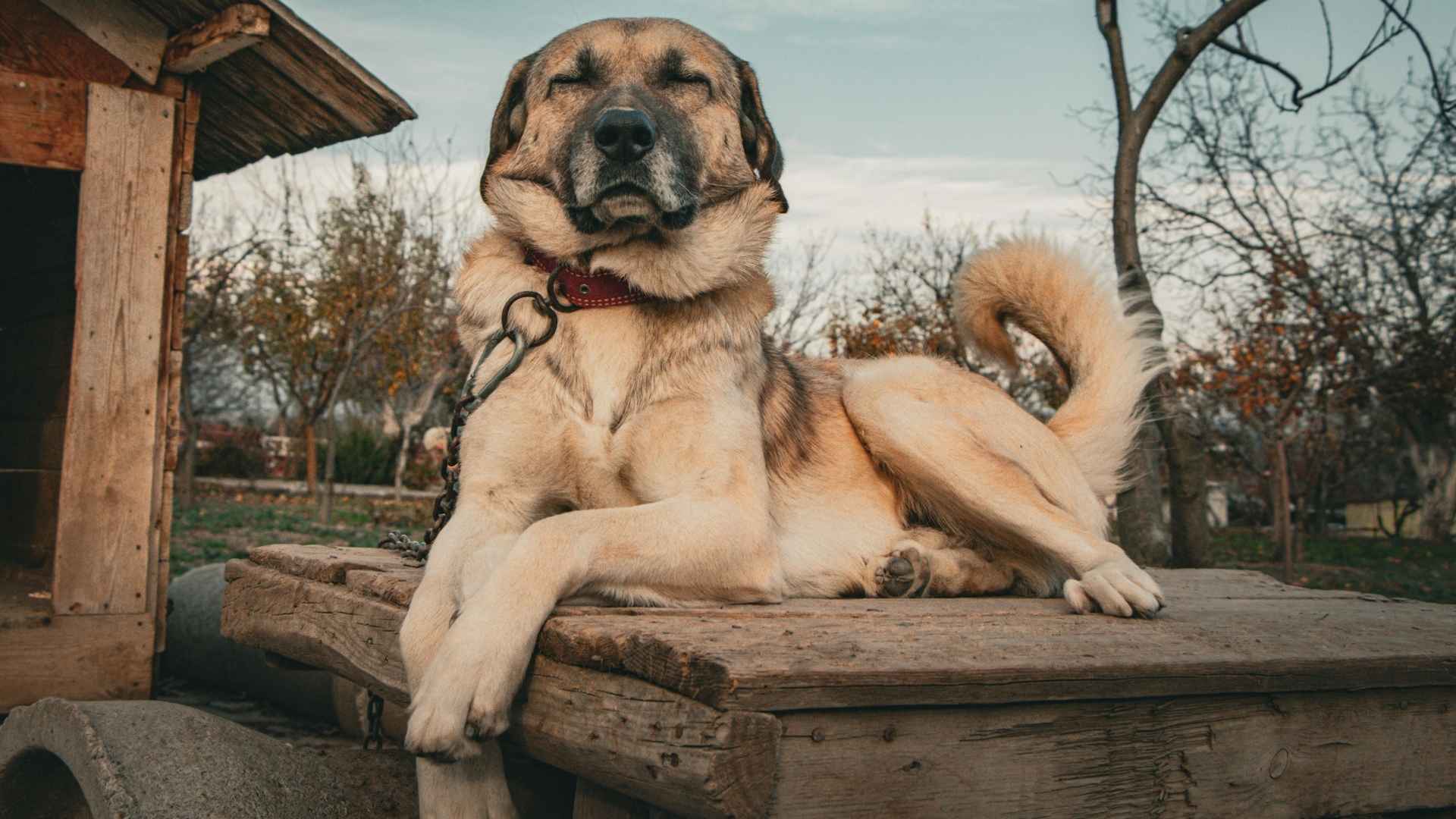When we think of guard dogs, breeds like the German Shepherd, Rottweiler, or Doberman usually come to mind. But did you know there are plenty of lesser-known or rare guard dog breeds that are just as brave and protective, sometimes even more so? These under-the-radar pups bring their own special mix of loyalty, smarts, and natural instinct to the job of keeping your home and family safe.
Many of these dogs were originally bred with one goal in mind: to guard. Over generations, traits like devotion, courage, and quick thinking were carefully nurtured, and those qualities still shine through today. What’s even better? A lot of these breeds aren’t just fierce protectors—they also make loving, well-balanced family pets.
If you’re looking for a loyal watchdog that’s a little off the beaten path, you’re in the right place. Let’s explore some of the most overlooked yet outstanding breeds that prove you don’t have to be famous to be fearless.
Lesser-Known Guard Dog Breeds
1. Kangal Shepherd Dog
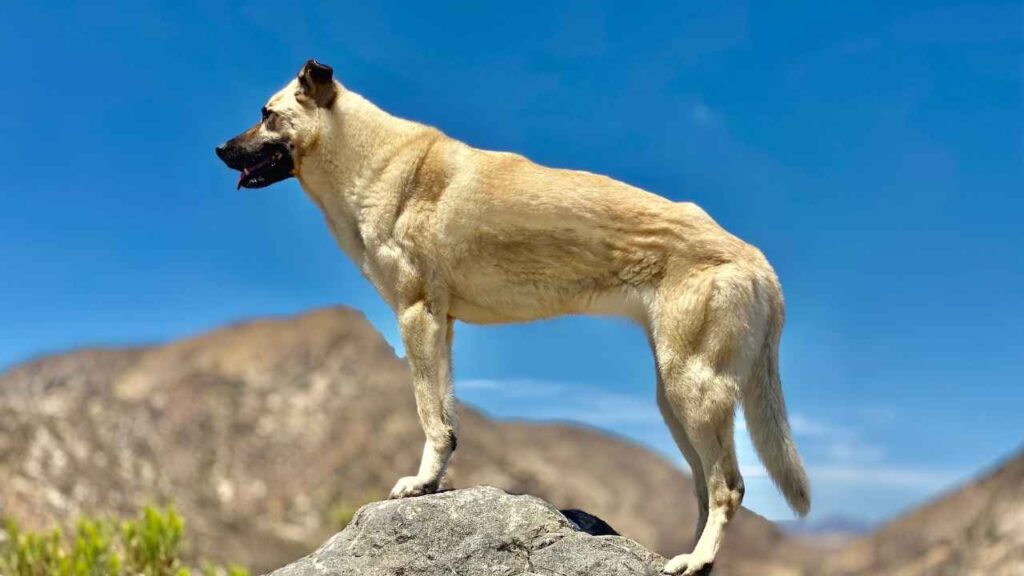
Straight from the rugged mountains of Turkey, the Kangal is a powerful and large dog known for its strength, intelligence, and loyalty. With a lion-like face and imposing size, this dog was originally bred as a flock guardian, as per Purina.
Often mistaken for Anatolian Shepherds, Kangals are a distinct breed with a proud heritage. A local legend even claims they were descended from lions—an exaggeration, perhaps, but a fitting nod to their noble appearance and fearless spirit.
This breed’s natural guarding instinct runs deep. Bred specifically to fend off threats like wolves and bears, Kangals use their sheer size, alert nature, and courage to keep herds safe. Remarkably, just two or three of these dogs can protect hundreds of animals, relying more on their intimidating presence to deter intruders rather than brute force.
Kangals also hold the record for the strongest bite force among dogs, measuring an incredible 743 PSI. But their power is used with restraint. These dogs are observant and deliberate, preferring to intimidate rather than attack unless absolutely necessary. Their calm demeanor and sound judgment make them reliable guardians in high-stress situations.
An independent and highly intelligent breed, Kangals are natural problem-solvers who don’t rely heavily on human commands. While they can be stubborn, they form deep bonds with their families and respond well to early training and socialization. With the right guidance, their independence turns into quiet confidence and loyal companionship.
2. Tosa Inu
The Tosa, or Japanese Mastiff, is a powerful, quiet breed originally developed in Japan for dog fighting. Though those roots remain part of their history, today’s Tosas are more often seen as calm, extremely loyal guardians suited for experienced owners who understand their strength and temperament.
These dogs are deeply devoted to their families, showing affection in a quiet, reserved way. They tend to be aloof with strangers, so early socialization is key, especially when introducing guests. While they’re not outgoing, they’re steady and deeply loyal to those they trust.
Tosas typically do best as the only pet. Their history makes them naturally wary of other dogs, especially of the same sex. If raised together with care, they might coexist with other animals, but most thrive in single-pet households where their boundaries are respected.
Despite their size, Tosas have a calm nature and tend to be laid-back indoors. They enjoy being near their people, often choosing to quietly sit nearby rather than seek constant attention. They’re not overly playful, but they bring a steady, grounding presence to the home.
Naturally protective, Tosas are excellent watchdogs. They stay alert and observant but act only when truly necessary. With proper introductions, they’ll accept visitors, though they’re unlikely to be friendly or enthusiastic about it.
3. Caucasian Shepherd Dog
The Caucasian Shepherd, often mistaken for a giant teddy bear, is equally impressive in size and spirit. Originating from the Caucasus Mountains, these dogs were bred to guard livestock and hunt bears. Their independent, fearless nature makes them exceptional protectors—calm with family but deeply suspicious of strangers.
They’re not overly social and tend to be wary of new people, pets, and even children they weren’t raised with. Early training is essential to manage their dominant streak and keep them well-adjusted at home. Left untrained, they can become overly territorial or stubborn.
Caucasian Shepherds do best in quiet households without frequent visitors or other pets unless socialized early. While not overly playful, they are deeply loyal and form strong bonds with their human pack. Their strong protective instincts extend to both people and animals they consider family.
Caucasian shepherds are large and powerful breeds best suited for experienced owners. They won’t chase a ball or charm strangers at the park—but they will stand by your side, calm and confident, always ready to protect the ones they love.
4. Estrela Mountain Dog
The Estrela Mountain Dog, or Cão da Serra da Estrela, is a rare and ancient breed from Portugal. Believed to be one of the oldest dogs from the Iberian Peninsula, they remain mostly native to their homeland, where they continue to serve as excellent guard dogs. Their rarity outside Portugal makes them a hidden gem among the best guard dogs.
As noted by AKC, their exact origins are lost to time. Estrelas were historically used by shepherds to protect livestock and occasionally assisted in hunting. While not built for battling large predators, their courage and determination made them reliable working dogs. The breed gained official recognition in 1934, preserving its legacy.
Estrelas are known for loyalty, intelligence, and independence. They form strong bonds with their families and are gentle with children, but are naturally cautious around strangers and other animals. Their instinct-driven nature means they can be stubborn, making them better suited for experienced owners.
This breed needs space and thrives in rural settings or large yards. Their thick coats allow them to handle harsh weather, and they adapt well to outdoor living. However, they still need structure, basic obedience training, and regular interaction with their people to stay balanced.

Though rare in the U.S., Estrelas remain trusted working dogs in Portugal. For the right owner with the space and experience to meet their needs, they offer steadfast protection and loyal companionship in a majestic, lesser-known package.
5. Broholmer
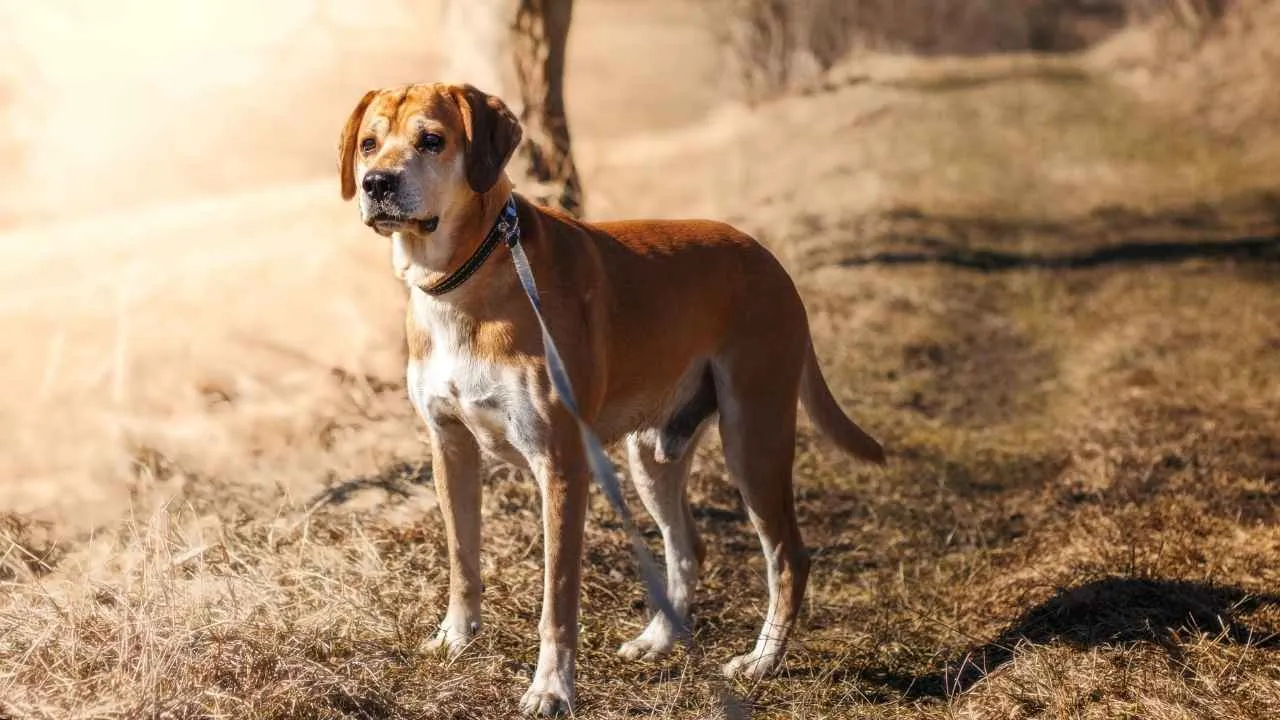
The Broholmer, or Danish Broholmer, is a noble giant from Denmark with a lineage dating back to the Middle Ages. Originally bred to guard estates and hunt large game, the breed nearly disappeared during the World Wars. A dedicated revival in the 1970s saved it, though it remains rare outside its homeland.
Despite their large frame, Broholmers are gentle, loyal, and affectionate. They bond closely with their families, get along well with children and other pets, and tend to be calm rather than confrontational. While reserved with strangers, they rely on quiet observation rather than aggression.
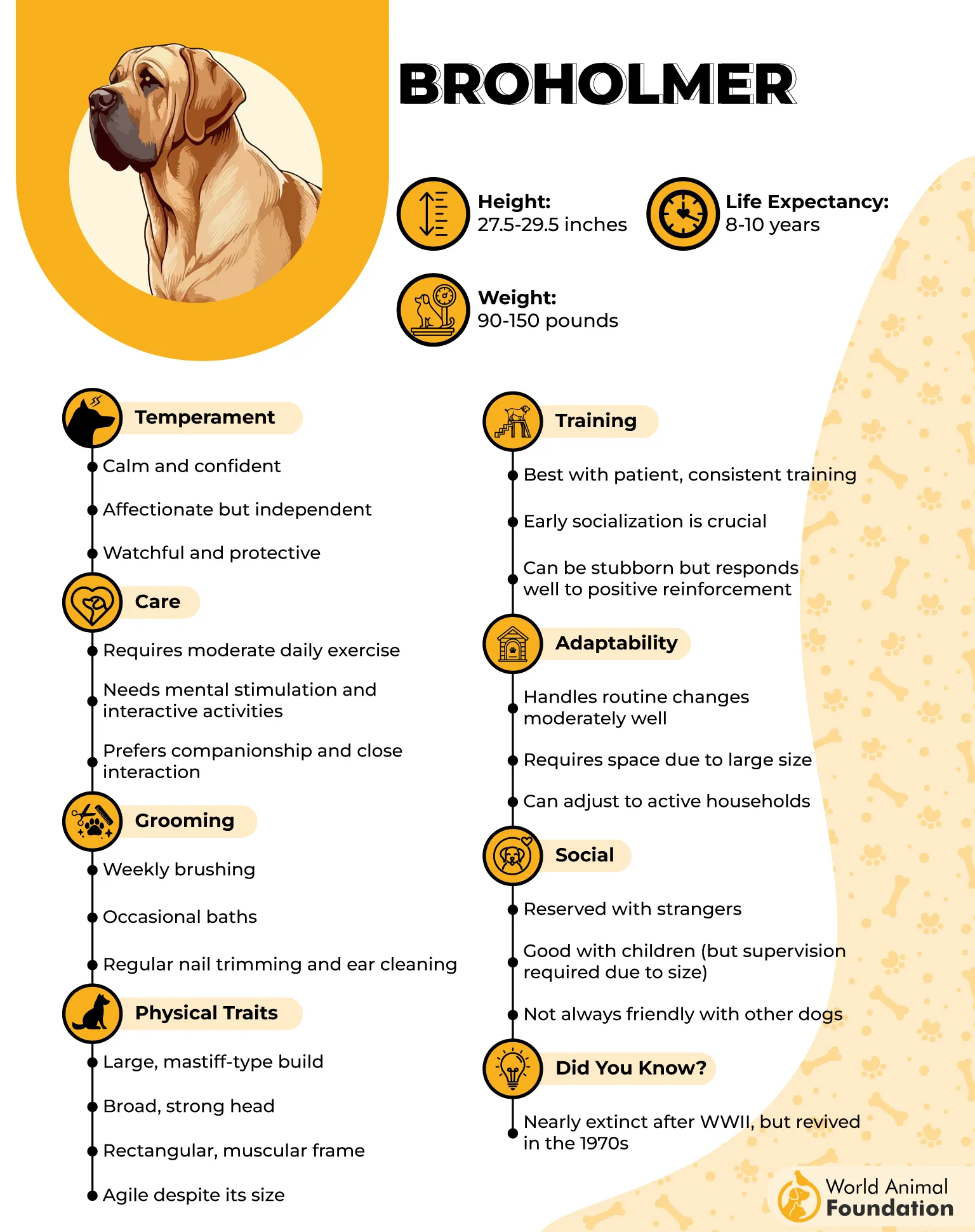
Broholmers are strong, muscular dogs with a dignified stance. Though they may look imposing, their calm eyes and relaxed nature reflect a sweet temperament.
They don’t need intense exercise but benefit from daily walks and mental stimulation. Due to their size, they’re best suited to spacious homes with access to a yard. Apartments are typically too cramped for their comfort and well-being.
Still uncommon outside Europe, the Broholmer offers a rare blend of strength and serenity. For experienced dog owners with the space and time to match, this dignified breed is a devoted and peaceful companion.
6. Central Asian Shepherd Dog
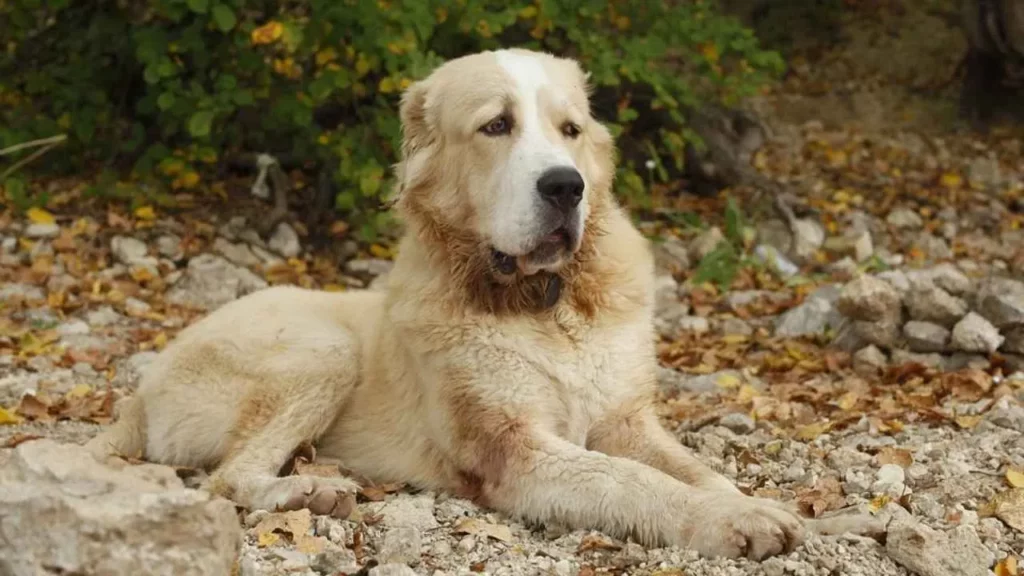
The Central Asian Shepherd Dog is a centuries-old guardian breed known for its strength, independence, and deep devotion to its people.
Developed across vast regions like Turkmenistan, Afghanistan, and Iraq, these dogs evolved through natural selection, adapting to harsh climates and protecting livestock from formidable predators like wolves, bears, and even lions.
This breed is not your typical family pet. Central Asians were bred to work independently, often without much human direction. They’re self-reliant, naturally alert, and take threats very seriously. While they’re fiercely loyal and loving with their families, they expect mutual respect and may be wary of strangers or unfamiliar animals.
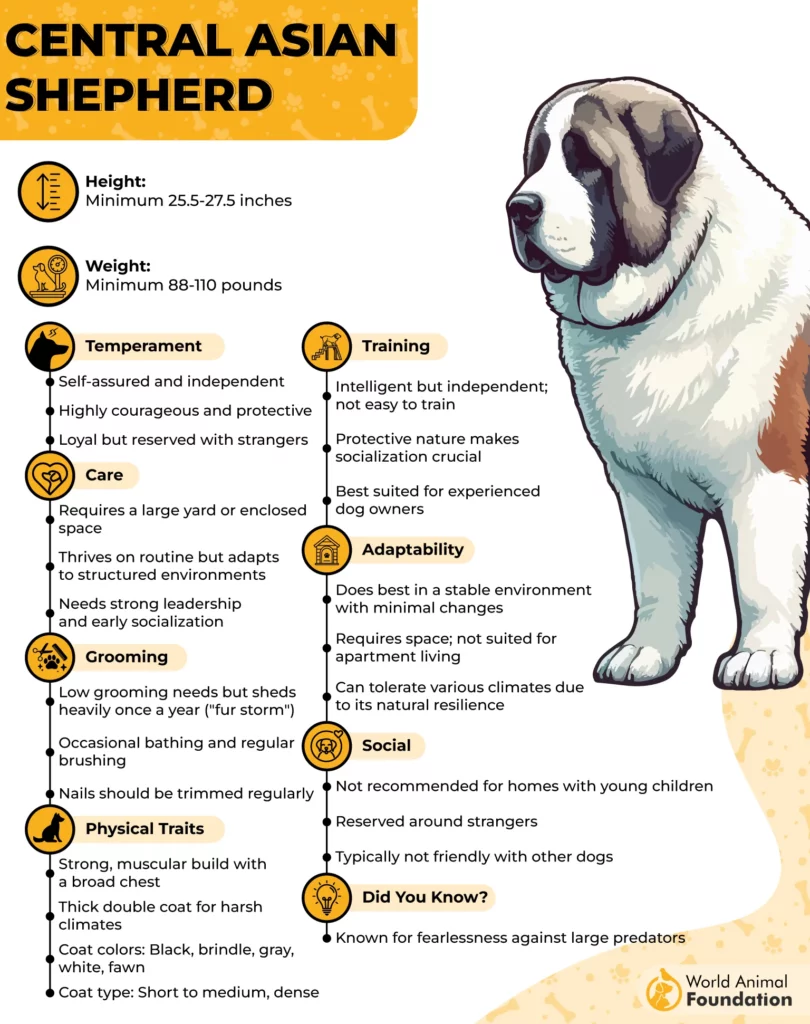
Physically, they’re impressive—robust and muscular with thick, loose skin, a rectangular head, and a coarse double coat that helps them thrive in extreme weather. They typically weigh between 88 and 110 pounds or more and stand over 22.5 inches tall.
Temperament-wise, Central Asian Shepherds are steady and even-tempered, but they mature slowly and need early socialization along with patient, consistent, proper training. These dogs don’t respond well to harsh discipline; they need a confident, respectful handler who understands guardian breeds.
Though rare in the United States, working Central Asians are still actively used in countries across Central Asia. With their courage, stamina, and deep-rooted protective instincts, they remain one of the most effective livestock guardians in the world, states PetMD.
7. Karst Shepherd

The Karst Shepherd, native to Slovenia, is a sturdy and agile livestock guardian often compared to the larger Caucasian Shepherd. With its dense gray coat, lion-like mane, and muscular build, it was bred to patrol rugged landscapes for hours. Their natural endurance means they thrive with regular, vigorous exercise.
Originally used to guard farms and herd livestock, the Karst Shepherd has started appearing in homes as a loyal family protector. They instinctively defend their territory and form close bonds with their people—watchfulness and loyalty come naturally to this breed.
While confident and alert, Karst Shepherds aren’t unnecessarily aggressive. They typically warn with a deep bark and only act if truly provoked. Their protective nature is strong, but it’s paired with sound judgment.
With early socialization and consistent training, they’re calm and affectionate with children. However, due to their size and instincts, supervision is important, and kids should learn to respect the dog’s boundaries.
Training requires a firm, consistent approach. Karst Shepherds need clear structure and leadership to thrive. Everyone in the home should follow the same rules to prevent confusion and encourage respectful behavior.
Whether on guarding duties or relaxing with family, Karst Shepherds are loyal and dependable. With the right guidance, they’re both excellent watchdogs and loving companions.
Conclusion
When it comes to choosing the right dog for protection, not all guard dogs need the spotlight to shine. Beyond the well-known police dogs and mainstream protectors like the Doberman Pinscher, breeds like the Catahoula Leopard Dog, Thai Ridgeback, and Spanish Mastiff bring both power and personality to the table.
These natural protectors may fly under the radar, but with the right upbringing, they make excellent family pets—loyal, watchful, and deeply bonded with their family members. Whether it’s a gentle giant with a calm nature and a loud bark, or an energetic breed with an eye to protect sheep, these dogs prove that greatness doesn’t always come in a popular package.
Breeds like the Giant Schnauzer and Staffordshire Bull Terrier, when properly trained from an early age, strike a balance between fierce loyalty and sweet affection. Some even go beyond home protection, serving as rescue dogs or thriving in rural settings.
So, for pet parents seeking a reliable guardian without sacrificing warmth or intelligence, these underappreciated breeds might just be the best guard you never knew you needed—smart, watchful, and ready to stand by your side.


